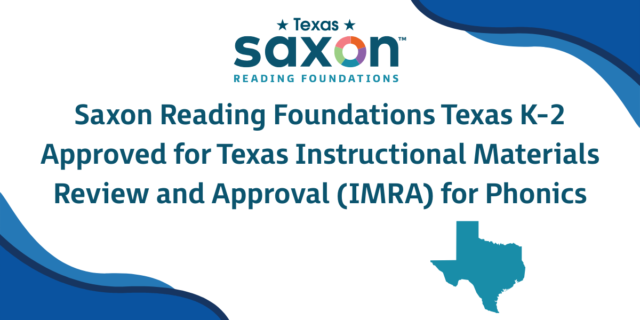
The following is adapted from the Units of Study in Writing, Grades K–2.
Here are some tips to help you adapt your writing workshop to support multilingual language learners (MLLs) and ensure that all of your students have access to the richest possible instruction.
Find Mentor Texts that Support Translanguaging
You’ll want to go to great lengths to provide multilanguage learners with a variety of mentor texts by many different authors and to include books written in students’ most proficient languages, as well as book in which the author chooses to translanguage.
Bilingual researcher Ofelia Garcia has helped those of us who are monolingual become more aware of the power of translanguaging in the lives of our multilingual students. She writes, “If you’ve ever been present in the home of a bilingual family, you will notice that many language practices are used. Sometimes the children are speaking one language, and the parents another, even to each other! Often both languages are used to include friends and family members who may not speak one language or the other, and to engage all.” Garcia (2012) defines translanguaging as learners’ “flexible use of their linguistic resources to make meaning of their lives and their complex worlds.” One way to encourage such inclusive language practices in your classroom is by sharing books that include translanguaging.
You might, for example, show children Saadia Faruqi’s book, Yasmin the Teacher, which is mostly written in English but includes words in Urdu as well. It is helpful for children to see that published authors sometimes decide the best way to communicate a meaning is by using another language. Teach your children that if, for example, a child’s grandmother has a particular endearment she uses and she speaks in a language other than English, including her exact words in her true language will help the character come to life on the page.
Follow A Predictable Structure
The structure of the writing workshop is deliberately kept simple and predictable. The workshop allows students access to grade-level curriculum through the minilesson and to individualized instruction during the work time, especially through conferences and small-group work.
For your MLLs, it is enormously helpful that your writing workshop is as predictable and consistent as possible. It is always important for you to do everything you can to reduce fear and anxiety so that children can learn. A child who is new to learning English might feel panicked when instructions, tasks, expectations, and use of materials aren’t clear. It is important for you to do everything you can to reduce fear and anxiety so children can do their best learning. So it is very useful that the writing workshop always begins with a minilesson, and children always know to bring their materials to the meeting area and to sit in the same spot. Then, after the minilesson, children know they will always have time to work independently while you confer and pull small groups. When work time ends, children know to either meet with partners or gather in the meeting area for a share. The predictability that results from following workshop routines consistently, day after day, provides confidence and a sense of comfort to multilingual language learners because it allows them to anticipate what will happen next. This decreases their cognitive load and their anxiety, and allows them to focus on their writing. This positive effect will be even greater if you can adapt workshop structure to teach other subjects across the school day.
Use Consistent Teaching Language
It is helpful to use predictable, consistent language to indicate the flow of your instruction. Even children who are at the earliest stages of learning English can come to understand the predictable phrases that accompany concrete actions. As they come to understand the familiar phrases—“Let’s gather,” “Bring your folder,” “Turn and talk,” “Can I have your attention?,” and “Off you go”—they develop a sense of belonging in the world of school.
The consistent language that characterizes writing workshop scaffolds each child’s classroom experience. For example, during rehearsal, students will often be invited to “tell your story across your fingers” or to “teach your book, touching each page as you do so.” Every time students rehearse their writing, you’ll return to this language, building consistency across your instruction. It’s helpful if all the adults a child interacts with use the same terminology. For example, if you use the phrase “touch and tell, sketch and write” to guide students’ rehearsal, you’ll want to encourage all adults who work with your students to use this language as well.
If most of your minilessons begin with you reviewing the content of previous minilessons, perhaps referencing a bullet on a chart, it’s helpful for your language learners to know that and for you to use consistent language and repeat your teaching point often.
Use Consistent Visuals and Gestures
The K–2 Units of Study make regular use of visuals, especially through anchor charts and one-day charts. In this way, the units help you provide comprehensible language input for your multilingual language learners. The units are filled with charts with headings that clearly state what the chart is about, as well as visuals that help children understand key terms that might otherwise feel abstract.
To make these charts even higher leverage, you’ll create them together with your students, post them in a central and consistent location in your classroom, and add your own illustrations and examples, drawing on your children’s work. It is helpful to reference them often as you teach.
You’ll probably want to give some children individual copies of particular charts. Be sure that you don’t overwhelm them with too many personalized charts; be selective and give different charts to different children. To select charts that will be particularly helpful to specific learners, remember that you can support instruction by drawing on charts from earlier grade levels. Using charts will allow all your students, and especially your multilingual language learners, to work with more independence since they’ll have a visual reference of what they’re working on as writers.
Establishing a Classroom Culture that Celebrates All the Languages Your Students Speak
It’s important to foster awareness around how different languages sound and look. Create opportunities to celebrate and include all the languages your students speak. For example, you might invite families into the classroom to share the different languages they speak. You might talk about the different ways stories end in different languages. Even posting a welcome sign in all the languages your children speak sends an important message.
Provide or create resources for your classroom in multiple languages—books, checklists, charts, signs, labels, greetings, students’ writing—and honor them all. Do what you can to create signs and labels in as many languages as may be relevant for your class—perhaps even more.
♦ ♦ ♦ ♦
The Units of Study in Writing, Grades K–2 is inclusive, culturally responsive, and supportive of diverse learning communities. The Supporting All Writers book in each core Units of Study set helps teachers adapt instruction to meet the full span of their learners. In the guide to each series, the “Ensuring Access: Helping All Learners Across the Curriculum” and “Affirming and Supporting Multilingual Language Learners” chapters provide a wealth of additional support. Here are some of the supports that you will find throughout the units and accompanying resources:
- Spanish translations of every chart as well as every teaching point.
- For every unit, there are suggested Spanish titles. These are sometimes translations of the mentor texts, and sometimes original Spanish texts. You’ll want to check the online resources for the most up-to-date recommendations for Spanish mentor texts.
- For every minilesson, we’ve created a brief—two-minute—video preview in Spanish that sets up Spanish-speaking students to anticipate what they’ll be learning in the minilesson. Each video unpacks key vocabulary, provides learners with helpful background knowledge, and explains any important metaphors used in the minilesson. Learners also get a glimpse into what the work they do during work time might look like. The videos have been designed so that children can easily access them while you are orchestrating whole-class transitions to the minilesson.
- Teaching tips in blue italics throughout the sessions identify ways the teaching is already supportive of English learners, and suggest additional ways to make your teaching even more supportive.
- Some work-time sessions are specifically designed to support your small-group work and conferring with multilingual language learners
- Every session begins with an “Ensuring Access” section that highlights the essential goals of a session and details ways in which the session already provides access, or can be taught in ways that especially do so.
- The writing workshop—and, indeed, the entire school day—immerses children in the complex oral language that is critical to MLLs’ language development.
- Throughout the units, you’ll support children in using all their language resources to mull over complicated ideas, rehearse for writing, and clarify their understanding of instruction and texts. We encourage you to allow children who need to do so to translanguage with each other in ways that help with their overall learning. You’ll especially see children encouraged to rehearse for writing in whatever language they choose.


